Gingival hyperplasia in dogs occurs when the gum tissue begins to grow up around the teeth, creating a pocket that can trap food, debris, and bacteria. Integrative veterinarian Dr. Julie Buzby explains how to recognize gingival hyperplasia and what to do about it.
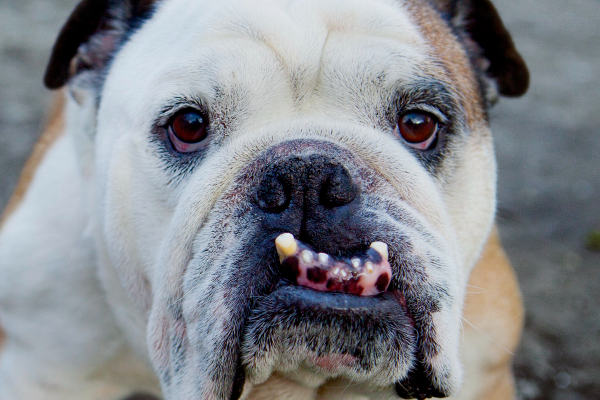
Recently I received the following text from a friend who lives several states away: “I know this sounds strange, but I think my Boxer’s teeth are disappearing into his gums.” And she attached a picture of her dog’s mouth that very much did look like the teeth were being swallowed up by the gum tissue.
Immediately, I recognized that her Boxer was most likely dealing with gingival hyperplasia. So, I recommended she make an appointment with her vet.
What is gingival hyperplasia in dogs?
Gingival hyperplasia in dogs is a condition in which the gum tissue (gingiva) experiences excessive growth (hyperplasia). When this happens, the gums become abnormally large and thick, and potentially inflamed or irritated. The gingival tissue may become so substantial that it covers the dog’s teeth—either partially or completely.
Gingival hyperplasia is a problem because the excessive gum tissue can trap food, debris, and bacteria next to the tooth. Over time, this damages the supporting tissues of the teeth, leading to dental disease and the potential for tooth loss.
Which dogs are prone to gingival hyperplasia?
Gingival hyperplasia can occur in any breed of dog, but the most common breeds diagnosed with the disease include:
- Boxer dogs (the most common breed to develop the condition)
- Bulldogs
- Great Danes
- Mastiffs
- Dalmatians
- Dobermans
- Cocker Spaniels
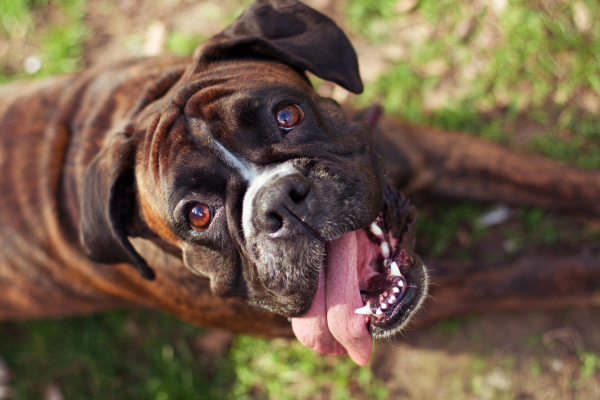
What causes gingival hyperplasia in dogs?
When gingival hyperplasia occurs, there is an increased number of cells present in the gum tissue. (This is different than increased cell size, which is the other way a tissue can grow larger). The underlying cause of this increase in cell number is not fully understood.
Gingival hyperplasia is most likely to occur when there is infection, plaque, or tartar present around the teeth due to poor oral hygiene. In other words, the dog has dental disease in dogs. In most dogs, dental disease would cause the gum tissue to recede.
However, in dogs with gingival hyperplasia, the opposite occurs—the dog actually develops increased tissue along the gum line. There is some suspicion that dogs with gingival hyperplasia have a genetic component that causes this abnormal heightened response to gum inflammation.
Additionally, certain medications can also cause gingival overgrowth. These medications include cyclosporine, an immunosuppressant used in allergies and autoimmune disease, and calcium channel blockers like amlodipine that are used to treat heart disease in dogs.
Finally, continued trauma to the gums due to a poorly aligned bite, irritation of the gums from a foreign object like a piece of a stick, or other causes of gum damage may also contribute to gingival hyperplasia.
What are the symptoms of gingival hyperplasia?
While the cause of gingival hyperplasia is not always easy to identify, thankfully its symptoms are more obvious.
Enlarged, firm, swollen, or lumpy gums
The most common symptom of gingival hyperplasia is the presence of extra tissue along the gum line (see picture below). This tissue may appear firm, swollen, or lumpy. The gum enlargement may be localized to one spot or generalized along the whole gum line. As the tissue thickens, it will also cover the teeth—trapping more bacteria in the mouth and causing further dental disease.
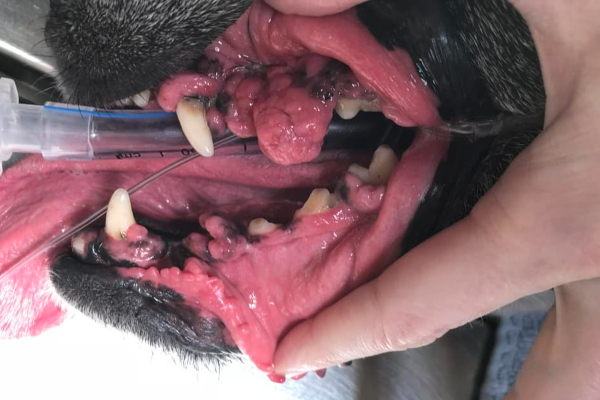
Other symptoms that may accompany gingival hyperplasia
Additional symptoms of gingival hyperplasia include:
- Red gums in dogs—Inflamed and irritated gums tend to look reddish. However, in the early stages the excessive gum tissue may still be a normal pink color.
- Gums that are bleeding—Your dog’s gums may bleed after eating or chewing on a toy. Or you may notice blood in his or her drool.
- Bad breath in dogs—One of the hallmarks of dental disease is foul breath.
- Excessive drooling—Your dog may drool more than usual.
- Dog keeps licking the lips—Dental pain or abnormal sensations in the mouth can cause a dog to repetitively lick his or her lips.
- Eating abnormally—The dog may be holding the mouth open while chewing, trying to eat one side of the mouth, or dropping food.
- Decreased appetite—Eventually, the inflammation in the mouth may cause your dog to not want to eat or to only want to eat soft food.
- Painful mouth—Your dog may jerk away or whine when you touch his or her muzzle.
- Presence of tartar or plaque on the teeth—The dog may have a yellow, brown, or black layer on the teeth.
It is important to note that dogs with cases of gingival hyperplasia may have all these symptoms or only a few of them. And many of these clinical signs are associated with other dental conditions like dog mouth cancer or periodontal disease (dental disease). Thus, they are not specific to gingival hyperplasia.
If you notice any of these symptoms in your dog or suspect he or she has gingival hyperplasia, please consult your veterinarian.
How is gingival hyperplasia in dogs diagnosed?
The process of having gingival hyperplasia diagnosed usually starts with your veterinarian performing a physical exam. As part of the exam, he or she will attempt to look in your dog’s mouth and evaluate the teeth, gum tissue, and other oral structures.
Sometimes this isn’t possible if the dog is painful, fearful, or doesn’t like having his or her mouth touched. In that situation, the vet will typically recommend scheduling a time when he or she can anesthetize the dog for the oral evaluation and perform the necessary treatments at the same time.
Often, the veterinarian can make a presumptive diagnosis of gingival hyperplasia based on clinical symptoms and exam findings. But definitively distinguishing between gingival hyperplasia and other causes of gum enlargement such as oral cancer or an epulis tumor in dogs requires a biopsy of the gum tissue. This is something the vet can do as part of the treatment of gingival hyperplasia.
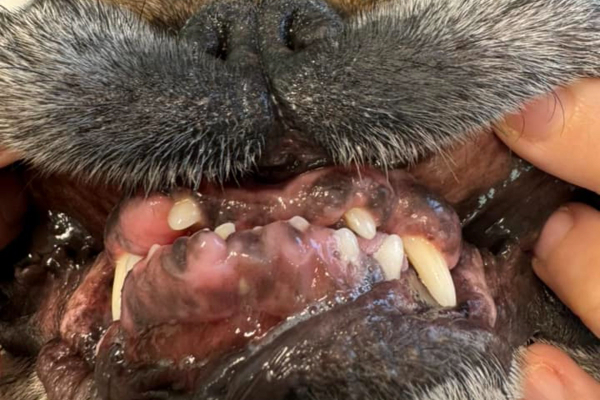
What is the treatment for gingival hyperplasia?
If a medication is to blame for the gingival hyperplasia, stopping the medication usually causes the hyperplasia to resolve. Otherwise, the best way to treat gingival hyperplasia in dogs is to address the underlying infection and the extra gum tissue. This means affected dogs will need a comprehensive dental evaluation and cleaning. And they also require surgery to remove the excess gum tissue.
Evaluating the mouth
Both aspects of treatment must be performed under general anesthesia. As part of the oral evaluation, your veterinarian might take X-rays of the mouth. This allows the vet to look for underlying dog tooth root abscesses, tooth reabsorption, or fractures. X-rays also help your veterinarian detect any bone loss in the jaw or pockets around the teeth that can occur secondary to dental disease.
Cleaning the teeth
After that, your veterinarian will likely begin the dental cleaning. This is very similar to a dental cleaning in people. The veterinary nurse will remove the tartar and plaque from the teeth and clean the debris out of the pockets around the teeth. Then if necessary, the veterinarian will perform a dog tooth extraction on any diseased, damaged, or loose teeth.
Removing the excess gum tissue
The next step is addressing the extra gum tissue. The goals are to remove the excess tissue that creates pockets and to reestablish a normal, healthy gumline. This process is called a gingivoplasty or gingivectomy (removing extra gingiva). The vet can also obtain any necessary biopsy samples at this time.
Before starting to cut the tissue away, your veterinarian will perform nerve blocks to prevent pain associated with the procedure. (Dogs who needed extractions would have already received the nerve block prior to the vet removing the teeth.)
It is useful to note that in cases of severe dental disease and gingival hyperplasia, the vet might recommend two separate procedures rather than one long one. This approach helps prevent your dog from experiencing too much pain or being under anesthesia for too long.
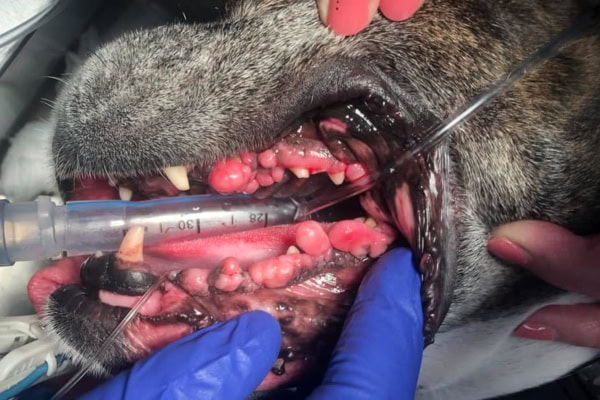
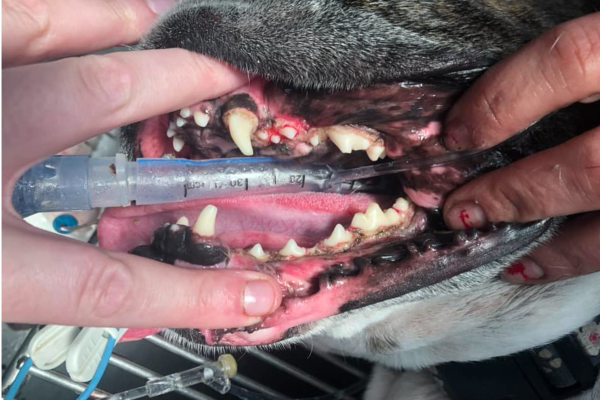
What does recovery from gingival hyperplasia surgery involve?
After the procedure, your veterinarian will discuss the guidelines for follow-up care at home. Many times, the instructions will include giving pain medications and oral antibiotics.
Additionally, your veterinarian might recommend feeding your dog a soft diet like canned food for a few days or weeks after surgery. Sticking to soft foods can help reduce pain associated with chewing hard kibble. Plus, it helps prevent damage to the surgery site.
It is also important to avoid letting your dog chew on or play with hard toys or bones while recovering. Chewing on these hard items can cause irritation and inflammation of the gums and delay proper healing.
While toothbrushing is great for oral health, it can irritate the healing gum tissue. Thus, you should avoid brushing your dog’s teeth until your veterinarian says that it is safe for you to do so.
Following your veterinarian’s post-op instructions closely is imperative to ensure that your dog heals properly and does not have any complications after surgery. If you have any questions or concerns during the healing period, please contact your veterinarian immediately.
Can you treat gingival hyperplasia in dogs at home?
Sometimes I have clients ask me if there is a natural or at home treatment for gingival hyperplasia. The cost of dog gingival hyperplasia surgery can range from a couple hundred dollars to a couple thousand dollars. So, I understand that it isn’t feasible for everyone.
However, surgery is the best and only way to treat the disease. There are no at home treatments that can remove dental infections once they are already present or safely remove the extra gum tissue. As long as the dog has gingival hyperplasia, he or she will continue to get debris and bacteria trapped between the tooth and gum that you can’t really get to with a toothbrush. Over time, this is a surefire recipe for worsening dental disease and potentially your dog losing teeth.
Thankfully though, there are at home methods to decrease the risk of your dog developing the problem again after surgery.
How can you reduce the risk of gingival hyperplasia reoccuring?
We do not fully understand the reason gingival hyperplasia develops. This makes it is impossible to know how to prevent it completely. However, there are some things you can do at home to reduce the risk of reoccurrence.
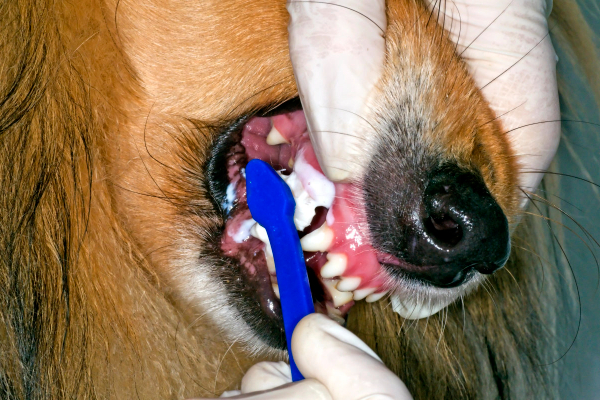
Because infection or inflammation likely play a role in gingival hyperplasia, it is important to minimize both. You can do this at home by:
- Brushing your dog’s teeth regularly (Remember to use dog toothpaste and wait to start brushing until your veterinarian says it is safe to do so.)
- Giving your dog dental chews or safe chew toys for dogs
- Using additives in your dog’s water that are designed to reduce tartar and plaque build up
- Keeping your dog from chewing on things like sticks that can break and become lodged in the gums
Additionally, it is important to monitor your dog’s oral health at home. If you notice your dog developing tartar and plaque, please schedule an appointment with your dog’s vet. Routine dental care is much easier and more cost effective than large corrective procedures. And catching dental disease earlier decreases the risk of gingival hyperplasia forming again in the future.
Partner with your vet to manage gingival hyperplasia
Some cases of gingival hyperplasia in dogs are more extensive than others. But the good news is that this disease can often be managed and treated. Once the infection is gone and the vet removes the excess gum tissue, most dogs will feel much better after a few days.
If you think your dog’s gums are growing too high on the teeth or you have other concerns, please don’t hesitate to reach out to your vet. Together you can find a plan to manage gingival hyperplasia. Then your dog’s mouth can be feeling and looking great again!
Has your dog had gingival hyperplasia?
Please comment below.
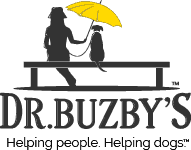
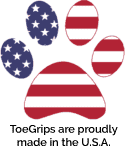
My dog is 13 years old, golden retriever, has a weakened heart and one growth on her canine which looks like gingivitis hyperplasia. We cannot do surgery for her due to age and health concerns. Looking for alternatives. We have been using coconut oil and clove powder both which she loves to see if it will help. Would love to know what the options are for a super senior dog where surgery is not an option.
Hi Samira,
I understand your concern for your senior girl and think she is lucky to have you advocating for her health and well-being. While there may be alternatives to traditional surgical removal, most of what I would recommend would still require some level of sedation. I am not aware of any holistic treatments for this specific condition. You could ask about a consultation with a specialist to see if they know of any other therapies to try. Hoping you can find the answers you need and wishing you all the best of luck.